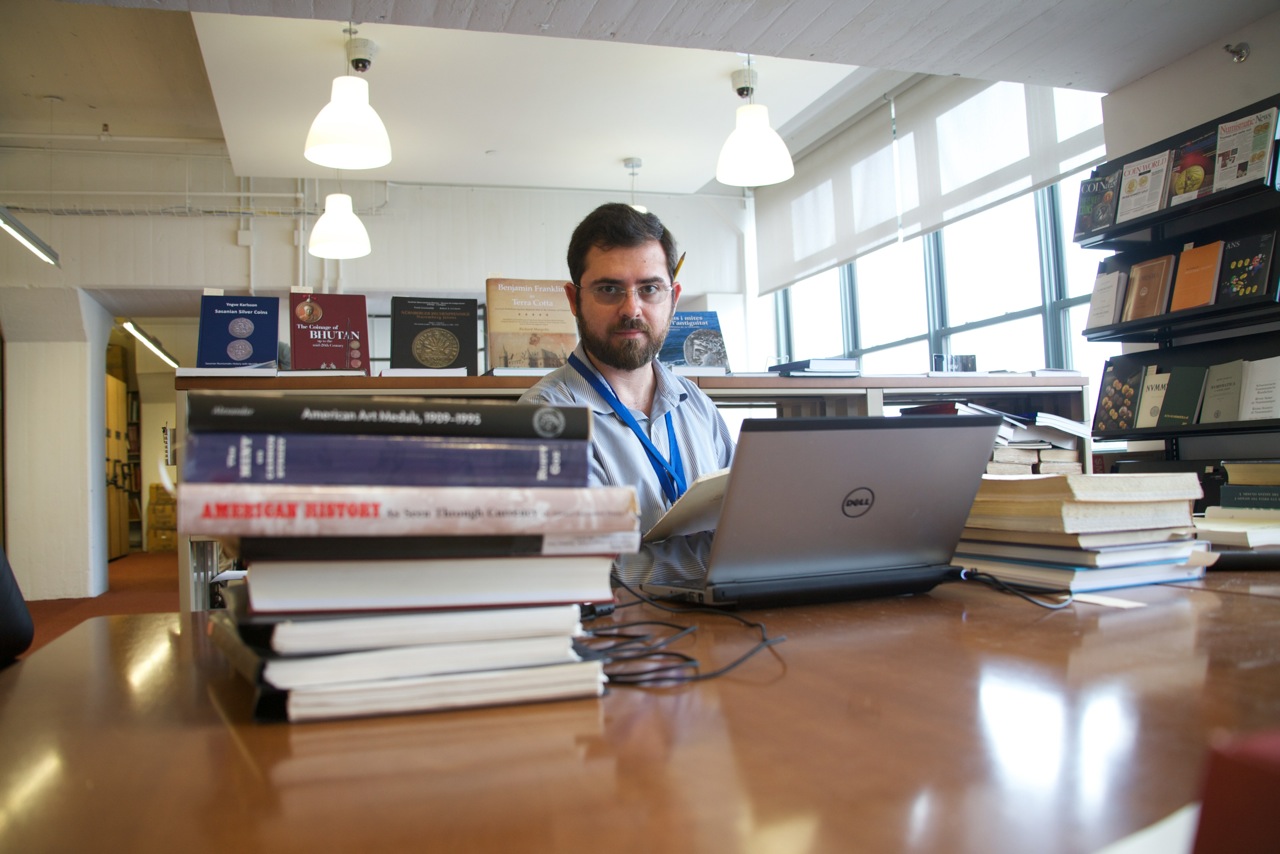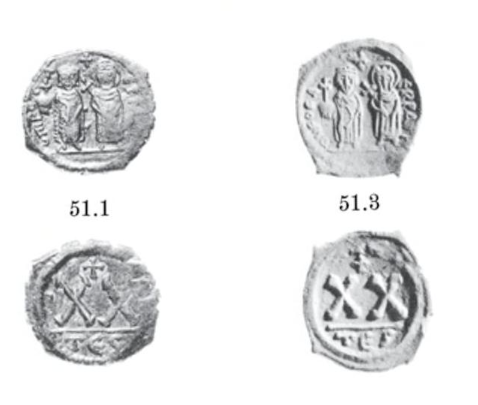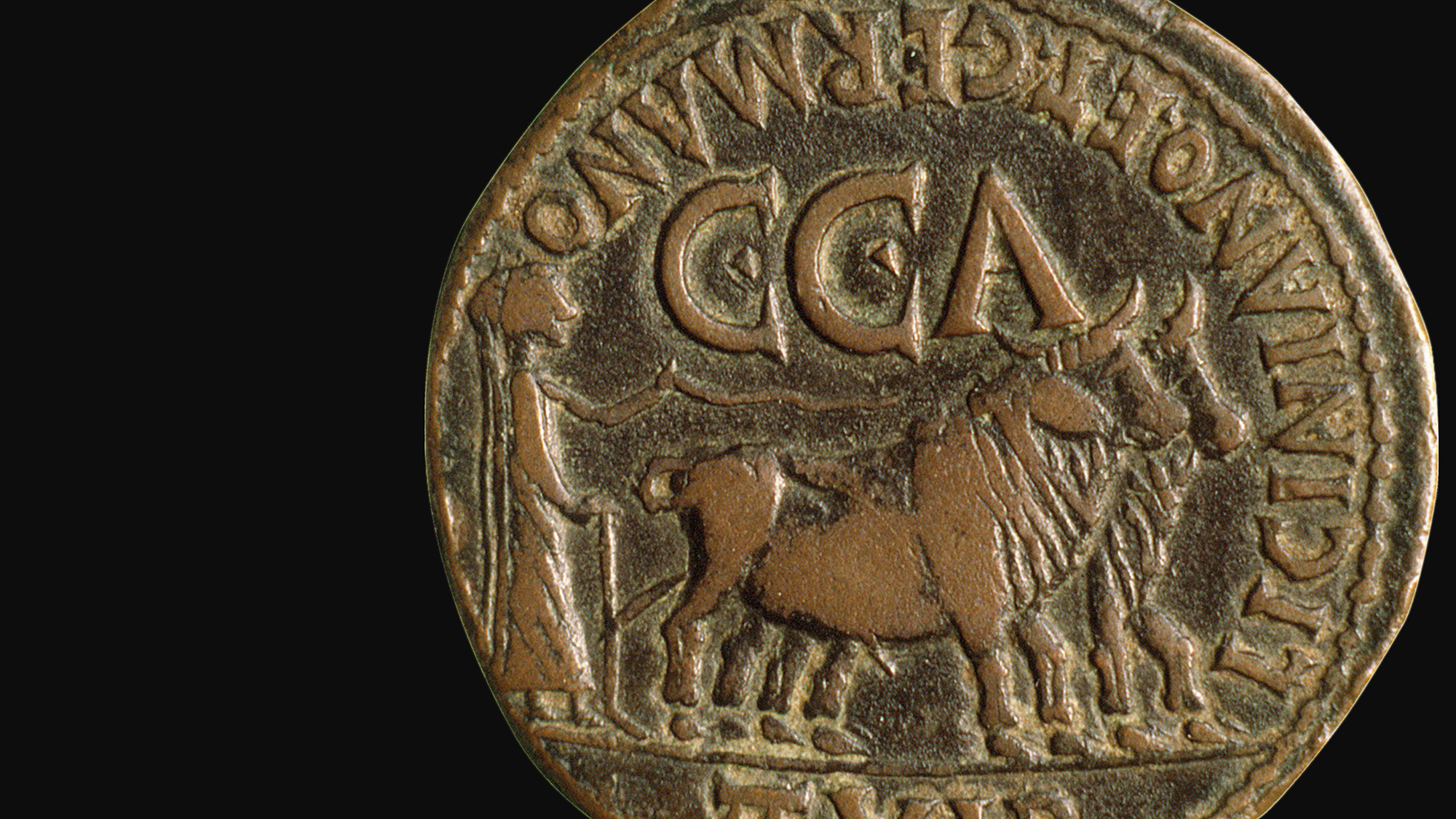Profiles in Research: Andrei Gandila
For the past month, Andrei Gandila, an Assistant Professor of History at the University of Alabama in Huntsville, has been at the ANS working on a project that examines the coinage of Byzantium. He was kind enough to sit for a short interview about his work, and what follows is a lightly edited transcript of our talk.
To start off, maybe you can just tell me a bit about what you have been doing at the ANS these past few weeks?
I am working on a new book project about the circulation of early Byzantine coins [Money in a Pre-Modern Economy: Coin Circulation in the Eastern Mediterranean, c. 500-650]. This is not my first time at the ANS. I was a student at the summer seminar in 2009 and I came back in 2010 to do some research for my dissertation [“Marginal Money: Cultural Encounters on Byzantium’s Northern Frontier”]. This new project actually started in the summer seminar when I was looking at the circulation of early Byzantine coins in the eastern provinces, which turned into an article that was published in the American Journal of Numismatics. There were three things that I noticed that I think are important. The first thing was that numismatists of the early Byzantine period were concentrating on particular places such as the Balkans, Palestine, Syria, and Italy–but I realized that there were so many finds published in the past three decades that we could begin to look at a bigger picture. So that is what I did in the massive AJN article, which is the foundation for this new book.
That article looked at circulation in the “eastern provinces,” what does that correspond to in modern-day geography?
I would say the Balkans plus Asia Minor and parts of the Middle East–modern Syria, Lebanon, Jordan, and Israel. It’s a big project obviously, but there seems to be an opportunity because many numismatists are so regional in their approach. The other thing, and this is where I want to connect with historians and work on Mediterranean networks of exchange and communication in late antiquity, is that much of that literature avoids talking about coins. Numismatic evidence in this context is often poorly understood and rarely used, and so my intention is to bring coins into this discussion. My hope is that this will help our understanding of the period. Archaeologists have been looking at the distribution of pottery, but in my opinion coins are much more powerful than ceramics. It is not just that they can be dated, but it tells something about the economy and the movement of coins and people. And you know where coins are produced, which is not always true for ceramics. One of my main goals here at the ANS has been to finish up this article, which is also going to be a basis for a chapter in the book, that looks at coins minted in the West–Italy and North Africa–found in the East–the Balkans, Asia Minor, and the Black Sea region in the sixth century.
So around the time of Justinian’s reign?
Yes, Justinian is a very important part of the story. He was a very ambitious Emperor; he had this dream of recreating the old Roman world, which meant reconquering the West and he was partially successful in this. He reopened mints at Carthage, Ravenna, Rome, and probably in Sicily as well, and all of this coinage circulated eastward with finds as far as Georgia. My goal in this article then is to find explanations–how did they circulate this far and why? Why didn’t they just stay near where they were minted? So I am looking at economic interpretations, archaeological interpretations, and the political and military situation. Justinian was waging war on several fronts at the same time and troops and coins were moving around because of that. Obviously there are limitations to this as a lot of coin collections, in Turkey for instance, have not been published.
Anyways, the third reason I am doing this book is that there has been a long debate about the nature of ancient coinages. Numismatists and economic historians have been reluctant to draw parallels with modern monetary systems, but the question is whether there is any token coinage in the 6th century. Is there anything that is pre-modern? How modern was early Byzantine coinage?

When you look at a Justinian follis, for example, you get a lot of modern looking bureaucratic information, much more than you would expect from a coin from the 6th century. On the obverse you have the Emperor and his legend, and on the reverse the large M indicates the face value–it is the Greek numeral of forty. And then you have the mint mark, which is for Constantinople, and the workshop number, in this case three. It also gives the exact date, year twelve (XII) of Justinian’s rule, which is AD 538-539. So this is a very bureaucratic and standardized way of displaying information on a coin, which is something that you see on any coin you handle today.
Right, so your interpretation suggests that because these coins look modern, they might have also been used in different ways than people have assumed.
Yes. This is arguably the most bureaucratic ancient coinage and part of my research is to find out exactly what the purpose of these coins was. Was it about the weight? Was it about the face value? A combination of the two? This is a big question that we simply don’t yet have an answer for. The weight standard is very inconsistent and that is a problem. The traditional interpretation of course has been that the value of coins are tied to their weight and metal–gold, silver, copper. That was certainly true for gold, but not so much for the copper. This follis of Justinian is by far the heaviest Byzantine coin ever minted, but there are hoards with coins of the same value that weigh half as much that are found mixed together with Justinian’s coinage. They clearly circulated together! How do you reconcile that unless it was all about face value? Unless there was some sort of common agreement that we are going to value and use these as an M, a piece of forty, and not based on the weight, then the system could not work. So there was some kind of token or fiduciary value behind these that we don’t yet understand. And this is something very modern.
How did you get interested in numismatics in the first place?
After my first year at the University of Bucharest, I went on a dig at Capidava on the Lower Danube and we found this metal thing that I had no idea what it was. It was a very rough uneven shape, but I cleaned it and the details came through. It was actually a late 6th century coin of the Emperor Maurice. I spent hours trying to figure out what it was, and when I eventually discovered it was a Byzantine coin, I was just fascinated. I was a history major at the time and I just combined my interest in history with my interest in coins, and it has developed into a career. It really all goes back to that first coin.
To see more about Andrei’s forthcoming and ongoing numismatic research, check out his webpage.





